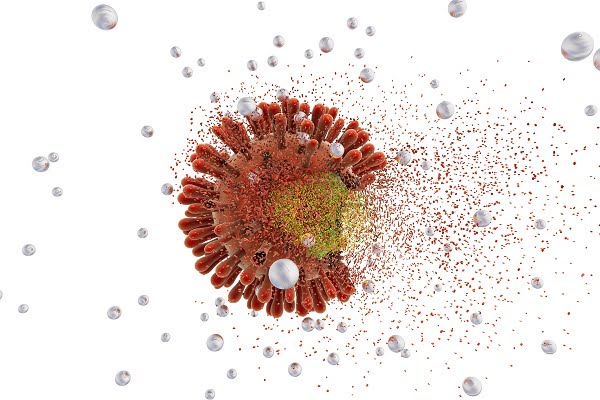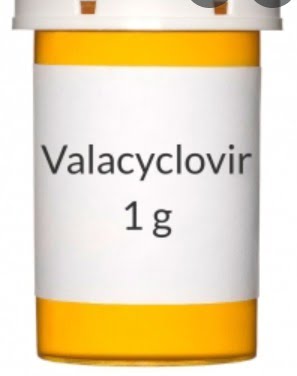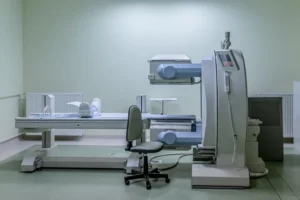Herpes Simplex Virus (HSV): Know About HSV-1 and HSV-2
- Updated on: Jul 15, 2024
- 4 min Read
- Published on Oct 3, 2019


What are herpes simplex viruses?
Herpes simplex viruses are very common, host-adapted pathogens that cause a wide variety of disease conditions. There are two different types of herpes viruses:
- herpes simplex virus type 1 (HSV-1), and
- herpes simplex virus type 2 (HSV-2).
Both are closely related but differ in epidemiology. HSV-1 is more commonly associated with orofacial disease while HSV-2 is normally associated with genital disease. Viral type cannot be predicted by lesion location though, as HSV-1 is associated with genital infections more often than HSV-2 in some population of the infected people.
Infections with these viruses are commonly known as herpes. Both oral herpes infections and genital herpes infections are mostly asymptomatic but can result in mild symptoms or painful blisters or ulcers at the site of infection as well. Read about symptoms of herpes.
What is herpes simplex virus type 1 (HSV-1 or simplex 1)?
It is a very common and endemic, highly contagious infection throughout the world. Most HSV-1 infections are acquired during childhood, and infection is usually for lifetime.
The vast majority of HSV-1 infections are oral herpes (infections in or around the mouth, sometimes called orolabial, oral-labial or oral-facial herpes causing oral sores etc), but a proportion of HSV-1 can cause infections in genital or anal area resulting in genital herpes.
More: HSV outbreak
More: Genital Herpes: Causes, Symptoms, Diagnosis, Treatment
How common is HSV-1 infection? How many people have HSV 1?
In 2012, an estimated 3.7 billion people under the age of 50, or 67% of the population, had HSV-1 infection. Estimated prevalence of the infection was highest in Africa (87%) and lowest in the Americas (40-50%).
According to WHO estimation, 140 million people aged 15-49-years were having genital HSV-1 infection worldwide in 2012, but its prevalence varied from region to region. Most genital HSV-1 infections, in adulthood, are estimated to occur in the Americas, Europe and Western Pacific. Childhood acquired HSV-1 infection, before the age of sexual debut are more common in other regions such as Africa.
How is HSV-1 transmitted?
It is usually transmitted by oral-to-oral contact to cause oral herpes infection, via contact with the HSV-1 virus in sores, saliva, and surfaces in or around the mouth. HSV-1 can also be transmitted to the genital area to cause genital herpes through oral-genital contact.
It can also be transmitted from oral or skin surfaces that appear normal especially when there is absence of symptoms. However, presence of active sores poses a greater risk of transmission.
Individuals who already have HSV-1 oral herpes infection are less likely to get infected with HSV-1 in the genital area subsequently. In rare cases, HSV-1 infection can be transmitted from a genital HSV-1 infected mother to her infant during delivery.
What is herpes simplex virus type 2 (HSV-2 or simplex 2)?
Infection with HSV-2 is a widespread infection throughout the world and is transmitted almost exclusively through sex, and is the main cause of genital herpes, which can also be caused by herpes simplex virus type 1 (HSV-1).
Infection with HSV-2 is incurable and lifelong. It is also known as human herpes virus. HSV-2 is highly contagious. It spreads through secretions from the mouth and genitals.
How is HSV 2 spread?
This virus can be transmitted by sex (vaginal, anal, or oral), or by any skin-on-skin contact with an open sore.
More: HSV-2 transmission probability
How common is HSV-2 infection?
Infection caused by HSV-2 is a global issue, and according to WHO, in 2012, an estimated 417 million people worldwide were living with the genital herpes. Occurrence of HSV-2 infection was estimated to be highest in Africa (31.5%), followed by the Americas (14.4%). It was also shown to increase with age, though adolescents had the highest number of newly infected people.
Women are more vulnerable to the infection with HSV-2 than men. It was estimated that 150 million men and 267 million women were living with the infection in 2012. This is because sexual transmission of HSV from men to women takes place more actively than from women to men.
More: Frequently Asked Questions (FAQs) About Genital Herpes: DiseaseFix Fact Sheet
HSV-1 and HSV-2: Similarities
HSV-1 and HSV-2 have some common characteristic and unique biological features. These include:
- Neurovirulence – the capacity to invade and replicate in the nervous system
- Latency – ability to establish and maintain latent infection (lie in dormant) in nerve cell ganglion near site of infection
- Reactivation – induction of latent HSV replication, in the area supplied by the ganglia in which latency was established, by various stimuli.
Both the types of viruses infect the body’s mucous membranes usually in the mouth or genitals. Once infected, they establish latency in the nervous system.
When in response to various physical or emotional stimuli, the viruses become reactivated, replicate and then travel the nerve pathways to the surface of the skin – sometimes it results in a physical outbreak and viral shedding. That is why the infection with both strains can recur and then be transmitted to others even in the absence of noticeable symptoms.
Clinical presentation of both HSV-1 and HSV-2 are identical, and you can’t differentiate between one strain of the virus or the other by the nature and location of the lesions. The physical symptoms of HSV-1 & HSV-2 are also indistinguishable.
It is estimated that at least two-thirds of the infected people by these viruses experience no symptoms at all or symptoms that are too mild to notice. Many people remain entirely unaware that they are even infected.
What is the difference between HSV-1 and HSV-2? (hsv 1 vs hsv 2)
The major difference between HSV-1 & HSV-2 is the site where the virus typically establishes latency in the body. HSV-1 generally lies dormant in the nerve cells near the base of the neck, and from there, viral shedding and outbreaks can occur on the mouth or face, whereas HSV-2 usually establishes latency in the nerve cells near the base of the spine, and from there, it recurs in the genital area.
However, either strain can reside in both the parts of the body while infecting oral or genital areas. Generally, people are not informed that HSV-1 and HSV-2 can reside in both locations (more than 30% of new genital herpes infections are the result of HSV-1).
HSV1 or HSV2: Which one is worse?
Though oral herpes caused by HSV-1 is a mild infection, but if the infection with it occurs in the eye causing ocular herpes, it can be a potentially serious complication that can lead even to blindness. In rare cases, it can also spread to the brain and causes herpes encephalitis, which is a dangerous medical condition and can even lead to the death of a person.
Infection with HSV-2 is very common but can be dangerous if occurs in newborns. It rarely spreads to other locations outside of the original vicinity and do not cause other complications generally.












